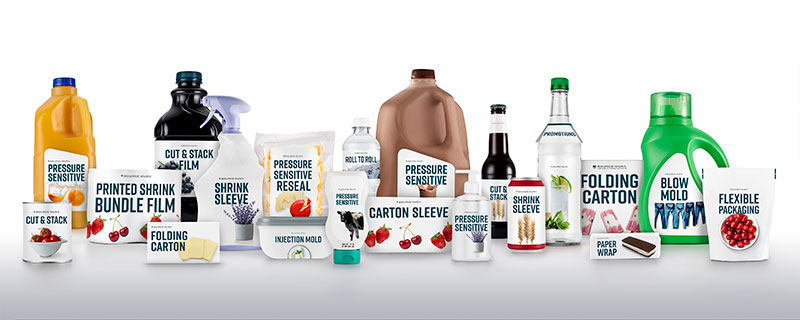Private label products are booming. It’s likely to stay that way.
By Beth Zipko, Executive Vice President of Source Wurx
It wasn’t that long ago when private label products were kept… well, private. They were the lower-priced, no-frills items many of us looked over our shoulders before buying, then buried under the name brands in our shopping carts. We weren’t exactly embarrassed to buy them, but we weren’t exactly proud, either.
Despite knowing full well we were purchasing a quality item often on-par with pricier name brands, the private label packaging – plain, utilitarian, even dull – silently screamed “less than.” For shoppers, each private label item could trigger an in-store inferiority complex.
In fact, it wasn’t too long ago when “private label” wasn’t even a recognizable phrase. Off-brand products were generously referred to as “store brand”; ungenerously, they were dubbed “generics,” or even (yuck!) “knock-offs.”

Private label retail sales
Fast forward to today. Per the Private Label Manufacturers Association’s latest yearly report, in 2022 the annual volume of private label products sold in the United States rose by $23.2 billion to a record $228.6 billion. That’s an increase of more than 11% from the previous year – a gargantuan growth curve representing nearly twice the uptick for brand-name products.
All totaled, private label items accounted for an eye-popping 29% of all new U.S. retail sales. The sales surge was far-reaching and widespread, spanning a swath of grocery categories. Private label bottled water rose 22.8%, beverages overall a thirst-quenching 19%. Cookies climbed 18%, while prepared foods and refrigerated items each rose more than 17%. Bakery, produce and deli meat all saw double-digit increases.
Some of the sales figures seem like clerical errors (they aren’t, I swear!). Private-label butter rose an astounding 26.6%, while store-brand eggs, on the strength of a nationwide egg shortage, nearly cracked the 50% mark – 49.6%, to be exact.
How, exactly, did we get here?
Let’s address the ever-growing elephant in the room first. Inflation has played an enormous role in the recent private label boom. Driven by worker shortages, supply chain disruptions and increased demand from housebound consumers buying more groceries while restaurants were inaccessible, the COVID-19 crisis fomented the steepest inflation since the early 1980s. Pandemic-era price increases peaked at a wallet-weary 9.1% in June 2022. And while inflation is slowing, it will still be a while before we approach the 2% annual rate deemed ideal by the U.S. Federal Reserve Board.
With the cost of everything rising so sharply, its little wonder why consumers were more amenable to giving private label products a try. While the sheer number of items and categories makes quantifying the savings impossible, Rajeev Batra, Ph.D., a marketing professor at the University of Michigan, places the price disparity between private label products and their name-brand counterparts at about 20%. With few other avenues for cost-cutting – there’s no such thing as private label gasoline, or electricity, or rent – consumers went all-in on store-brand groceries.
But inflation alone can’t explain double-digit growth in a single year. The unprecedented private label boom stood on the shoulders of two sturdy foundations: product quality and packaging sophistication.
Think about it: just because someone gives a product a chance for costing less doesn’t mean they’ll keep giving it a chance. If the product is clearly inferior, it’s on borrowed time. Second-rate products get first-time customers, but generally not sustained customers.
Instead, the vast majority of customers trying (or trying more) private label products in recent years have discovered one thing: they are quality products, often indistinguishable from brand names. Food ingredients science has come a long way, and many store-brand foods boast recipes so similar to name-brand items that consumers often wonder why they didn’t switch sooner.
Sometimes, the product is literally the same thing. For example, in many markets the name-brand and private label milks sitting side by side on shelves also sat side by side at dairies. Same products, different labels – and different price point.
Packaging also has played a substantial role in private label’s proliferation. Gone are the days when store brand items were contained in bulky packaging with barebones labeling. Private label products once stood out on store shelves in a detrimental way: by being the lonely black-and-white, plain-text downer amid a sea of vividly colored products.
Thank goodness those not-so-good old days are over. Today’s private label products are as creatively packaged as their branded big brothers. Sleek designs, creatively shaped multicolor labels, dazzling dispensers, high-resolution imagery. Sorry, Mr. Toucan, the private label “fruited loops” just earned your spot in the shopping cart.
Store brand packaging has other tricks up its sleeve labels, too. For example, multi-packing is on the rise, often emulating what competing brand names are doing but with exponential savings; think two-packs of antiseptic mouthwash, or four-packs of Greek yogurt. When buying in bulk is combined with a sense of quality interchangeability, private label products enjoy a competitive edge.
Finally, private label brands enjoy the advantage of being… well, private – as in owned by the retailer private. When a store fully owns its product, it has freer range to drop its price however low it deems fit. It isn’t uncommon for retailers to sell certain private label items at cost just to get consumers in the store, where they’ll assumedly also purchase more profitable items.
This article was originally featured in Packaging Technology Today